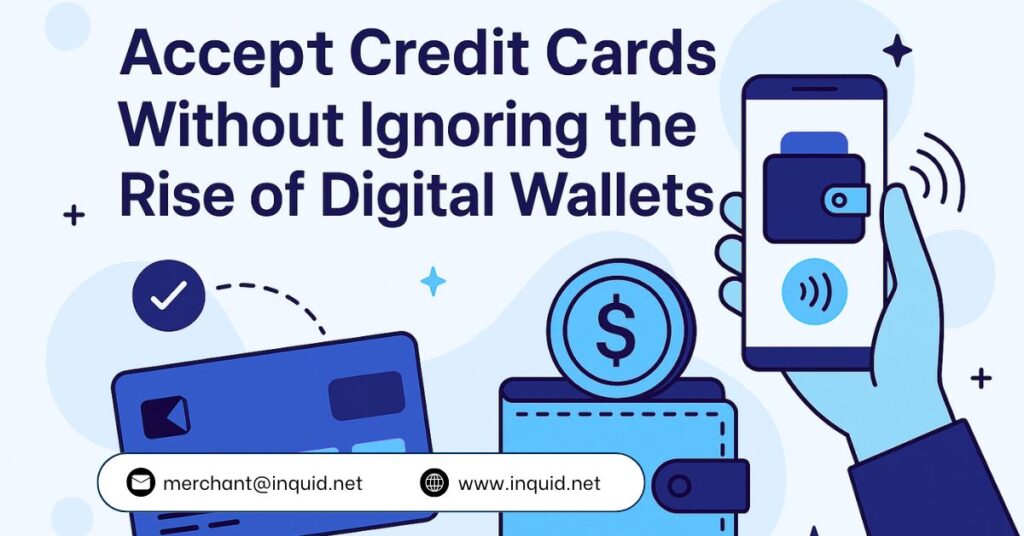
Consumers are paying differently than they did just a few years ago. While digital wallets like Apple Pay, Google Pay, and PayPal are gaining traction, credit cards still hold a significant place in online payments. Many buyers continue to rely on them, particularly for recurring billing, international transactions, and large purchases. Businesses don’t have to pick sides—accepting both credit cards and wallets gives you broader coverage and fewer lost sales.
Why Credit Cards Still Play a Key Role
Despite the rise of newer payment methods, credit cards remain one of the most widely used ways to pay online. They offer speed, convenience, and security that consumers are familiar with. For many users, especially those making high-value purchases, credit cards feel more dependable.
They’re also critical for subscription-based models or businesses that rely on recurring billing. When you accept credit cards, you’re not just meeting expectations—you’re opening your business to markets where wallets aren’t as common or reliable.
Industries labeled as high-risk especially benefit from credit card support. Some payment methods place restrictions on these industries, while others outright block them. Credit card solutions designed for high-risk businesses can provide much-needed stability in such cases.
The Rise of Digital Wallets and What It Means for Merchants
There’s no denying that digital wallets have grown fast. Mobile-friendly and often quicker to use, they’re popular among younger shoppers and those who prefer device-based transactions. Wallets often feel more secure due to tokenization and minimal card data exposure.
But wallets aren’t a complete replacement. They sometimes come with limitations—fund holds, compliance hurdles, or lack of support for certain industries. As a result, leaning entirely on wallet-based payments could cost you conversions, especially in markets that still lean heavily on traditional cards.
Blending Credit Cards and Digital Wallets
The smart move isn’t choosing one over the other. It’s creating a checkout experience that allows both. Adding wallet support doesn’t mean removing credit cards—it means widening your reach.
Start by building a strong base with reliable credit card processing and then introduce wallet support where it makes sense. This lets customers pick the option that fits their preference and creates fewer reasons for cart abandonment.
If you operate in a high-risk industry, partner with a provider that supports both types of payment flows. Having flexibility in your merchant account setup can give you more room to grow without getting blocked by payment restrictions.
More Options Mean More Trust
Offering just one or two payment methods might make your business look limited or less credible. On the other hand, seeing major card brands alongside wallet logos sends a stronger message. It tells buyers that your store is built to serve them, no matter how they choose to pay.
Even if you’re starting small, you can accept credit cards without major setup costs. From there, expanding into wallets becomes a natural next step—not a disruptive overhaul.
Preparing for What Comes Next
Payment habits change, but no single method replaces all others. By giving customers both credit card and digital wallet options, you’re not just keeping up—you’re staying ready. This balanced approach supports different user habits, reduces friction, and helps you adapt as preferences shift.
Working with a provider that understands both sides of the payment equation—cards and wallets—means you don’t have to sacrifice stability for speed or limit growth to meet tech trends.
Frequently Asked Questions
1. Why should I still accept credit cards if digital wallets are growing?
Credit cards are widely used for recurring, high-value, and international payments. Offering both lets customers choose how they want to pay.
2. Can I accept credit cards and digital wallets together on my site?
Yes. Many processors allow integration of both, creating a flexible checkout experience for your customers.
3. Is it difficult to set up a system to accept credit cards?
Not with the right partner. You can accept credit card payments with no setup fees through providers like inquid.
4. Are digital wallets safer than credit cards?
Wallets offer features like tokenization, but credit cards also provide strong buyer protection. Both are secure in different ways.
5. What’s the best option for high-risk merchants?
Use providers that support both credit card processing and wallets, especially if your business falls into a restricted category.
